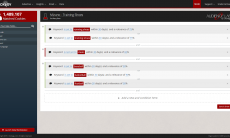“Free paid search” certainly sounds like an oxymoron doesn’t it? (And no, my name does not rhyme with “oxymoron.”) Welcome to the first Biznology Newsletter. I will be coming to you each month with a topic at the center of business and technology—this month we’ll look at the burgeoning paid search business.
Paid search sounds simple enough. You pay, and the search engine shows your listing. And it usually is that simple. Except when paid search is free.
Two big opportunities exist in paid search: shopping search and paid placement. Let’s look at shopping search first.
Shopping search for free
Growing at a fast rate (22% in the last year), shoppers can compare products and merchants across wide varieties of product categories, looking for the best product and the best deal.
Merchants are finding shopping search the place to be, with one ComScore studyshowing shopping searchers buy twice as often as other searchers, and spend twice as much. Clearly there is a value proposition worth paying for, with marketers ponying up ten cents a click and more. But there is one way to get it for free.
Froogle, Google’s shopping search entry, is still in beta test. You can sign up and provide a trusted feed containing all of your product data without incurring any per-click fees—at least as long as Froogle remains in beta test. Perhaps Froogle will emerge from beta test soon, after posting 270% growth in 2004 over the prior year (according to Hitwise). Until it does, it’s open season.
Froogle is not for everyone. Like any shopping engine, unless you sell the products in its categories, you can’t play. (This is not paid placement, where you can buy any search keyword that searchers can type.) As befits a beta test, Google also has restrictions that other shopping search engines may not have:
- Your site must be written in English.
- You must take orders online.
- You must ship direct to customers anywhere in the US
- You must list your prices in US currency.
Froogle is far from the leader in shopping search, but what do you want for nothing? Enjoy the bargain while it lasts.
Paid placement for free
This one is tougher, but with a little ingenuity, you may be able to get the clicks without the bill. To do so, you should try borrowing a page from the offline marketing play book called cooperative advertising. Retailers can run ads in local newspapers, for example, that are paid for (in part) by the manufacturers of the products advertised.
Cooperative arrangements are beginning to be attempted in search marketing as well. Both Intel and Microsoft are working with their key customers to defray paid placement costs by paying part of the per-click fees for products that contain their components. You may want to approach your suppliers with a similar idea.
But, as true skinflints, we don’t want to just reduce our costs—we’d like them to be zero. How else can you get someone to share the costs? You might want to take a look at your supply chain. Suppose you are a business-to-business marketer but your paid placement keywords are attracting consumer clicks that just go to waste? Perhaps you can team up with one of your resellers to share the clicks (and the costs). If you sell wholesale and they sell retail, put up a page for those keywords that sends searchers to the right site (yours or your retailer’s) and you can split the per-click charges for the traffic you get.
Perhaps the combination of getting suppliers and retailers to chip in will make your paid placement costs zero, but even if it doesn’t, you’ll be able to afford much higher bids on your keywords than your sales alone would justify. Your sales should be far higher than the costs you incur, if any.
These tips may not work for everyone, but they are worth exploring. Paid search has proven highly profitable for many companies, but we skinflints can reduce the costs to make the profit even greater.







